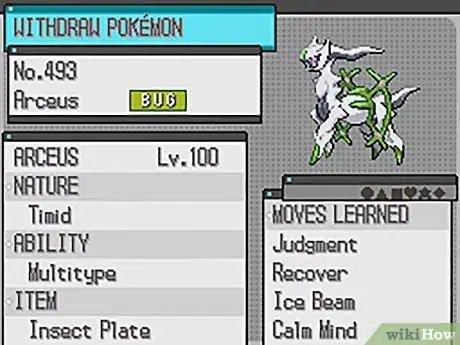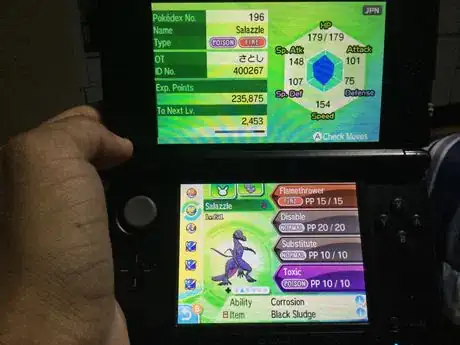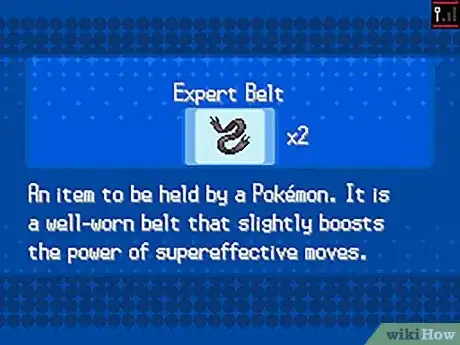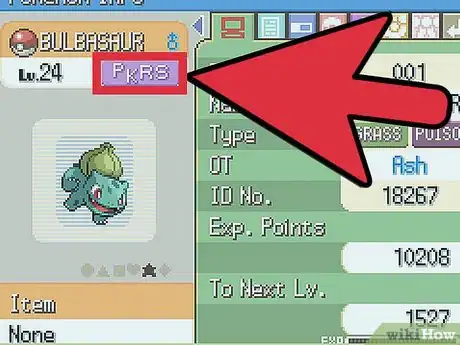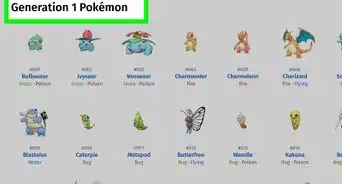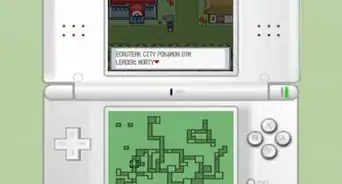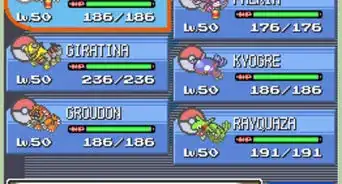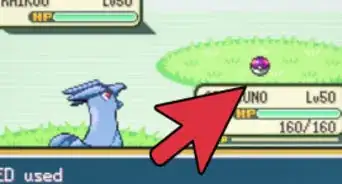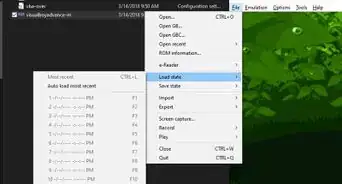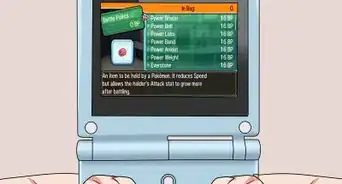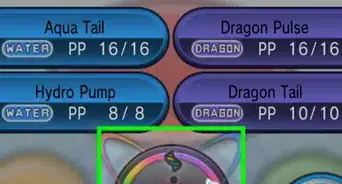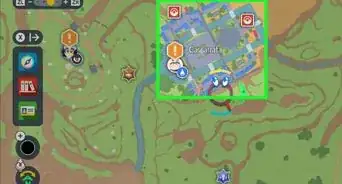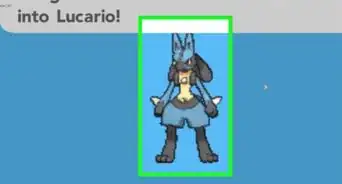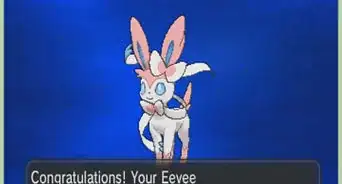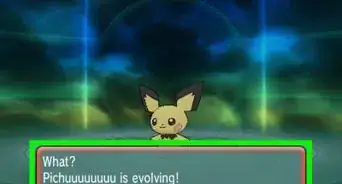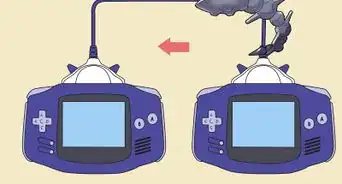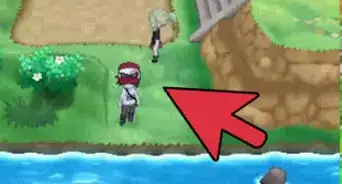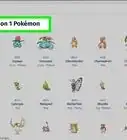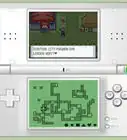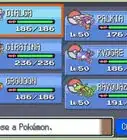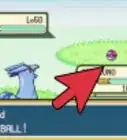This article was co-authored by Madeleine Flamiano. Madeleine Flamiano is a Role-playing Game Enthusiast based in Berkeley, California. She has over 20 years of gaming experience and is an avid gamer in all parts of her life—she's especially fond of tabletop board games and the world of Pokémon. Pokémon Crystal Version is her favorite game in the franchise. Some of her greatest feats were evolving Eevee to a Level 99 Umbreon and collecting every legendary bird Pokémon. Her professional path started at NaNoWriMo, where she scripted a summer-long world-building series and hosted its Virtual Write-Ins. She has written seven books for DDCO Publishing, which specializes in LitRPG and is operated by New York Times Bestseller JA Cipriano. She has ranked in the Top 100 list for Dark Fantasy, Sword & Sorcery, and Fantasy Romance. She was voted by her peers as "The Perfectionist" on Roleplay Adventures, a SERP for forum roleplaying. Madeleine graduated from Mills College with a B.A. in English with a concentration in Literature and a Minor in Philosophy.
There are 39 references cited in this article, which can be found at the bottom of the page.
This article has been viewed 1,058,975 times.
Having a balanced Pokémon team is helpful, so that you will have an easier time battling all types of Pokémon. While this may seem like a difficult task (especially since there are a lot of different Pokémon), creating a balanced Pokémon team is possible, and this wikiHow will teach you how to create one.
Steps
Before You Begin Choosing Pokémon
-
1Consider your goals. Are you trying to beat a friend, or someone random? Are you playing casually or competitively? Deciding on these things will help you out later down the line.
- If you're just bored, doing it for the sake of having a team, or making a team for fun, consider sticking to your favorite Pokémon or picking a theme.
-
2Choose a battle format. The format determines how many Pokémon and trainers will be battling at a time, greatly affecting the flow of the battle.
- Single - The classic 1v1 trainer battle where one Pokémon is used at a time (standard format during campaign mode). Battles are generally longer, prompting more defensive strategies and allowing for more setups and entry traps).
- Double (Gen III onward)[1] [2] - A 1v1 trainer battle where two Pokémon are used at a time. Battles are generally much shorter than singles due to more Pokémon being on the field simultaneously, prompting more offensive strategies and stronger teamwork. Spread moves (one that hit the entire field) are also viable here.
- Multi (Gen III onward)[3] - A 2v2 trainer battle. Due to party size being limited to 6 Pokémon at a time, trainers are only allowed to bring up to 3 Pokémon from their individual teams.
- Triple (Gen V & VI)[4] [5] - A 1v1 trainer battle where 3 Pokémon are used at a time. Most single target moves (with a few exceptions) are only able to hit Pokémon that're oposite/adjacent to the user (i.e. left & right positions can't hit each other, but both can attack/be attacked by center position). Pokémon on the field may also 'shift' positions with the Pokémon adjacent to them (at the cost of losing their turn).
- Rotation (Gen V & VI)[6] [7] - Similar to Triple battles, except Pokémon are now placed in a 'wheel-like' formation with one Pokémon in front and two in the back (only the front Pokémon can attack/be attacked). Unlike in Triple battles however, shifting and attacking occur in the same turn).
- Wonder Launcher (Gen V only)[8] [9] - A multiplayer battle feature (available only if both trainers have it active) where trainers earn points at the start of each turn that can be used to buy items; the items that're bought can then be used mid-battle.
- Battle Royal (SM/USUM)[10] (NTBCW the Battle Royale mode from Pokémon Rumble) - A 1v1v1v1 trainer battle, with 3 Pokémon per team. Trainers earn 1 point for each of the opposing Pokémon they knock out, winning if they hold the most points at the end.
Advertisement -
3Choose a battle tier. Each tier (with the exception of Anything Goes) bans certain Pokémon and techniques for various reasons, ranging from balancing purposes, to creating a greater challenge.
- Note that while many communities have their own tier lists, the Smogon tier list[11]
[12]
is the most well-known/widely used, and includes:
- Uber - Contains Pokémon and tactics that're too overpowered for the OU tier (e.g., Rayquaza Mega-evolving or OHKO moves like Sheer Cold or Fissure).
- Over (OU), Under (UU), Rarely (RU), & Never (NU) Used - Tiers based on an individual Pokémon's usage in the competitive scene, with the more commonly used Pokémon generally outclassing the ones that perform similar roles in lower tiers.
- Not Fully Evolved (NFE) - Any Pokémon that isn't fully evolved. Pokémon must also be capable of evolution in the first place.
- Little Cup (LC) - Similar to NFE, except Pokémon must also be available (in the wild, not breeding) at Lvl 5.
- Monotype - All Pokémon on a team must share a common type (both single and dual typings are allowed).
- Video Game Championship (VGC)[13] - Nintendo & The Pokémon Company's official annual tournament. Rules differ slightly with each year, but consistently uses the Doubles format.
- Note that while many communities have their own tier lists, the Smogon tier list[11]
[12]
is the most well-known/widely used, and includes:
-
4Consider basing your team around a specific battle mechanic. Some Pokémon can take advantage of certain effects in ways that others can't, so many trainers either build teams from them, or specifically to counter them. Examples of these mechanics:
- Baton Pass teams[14] - Boosting the stats of a tank, then using Substitute and Baton Pass to safely pass the boosts to a sweeper.
- Tailwind teams[15] - Doubles the speed of all Pokémon on the user's team. Generally used to boost the speed of medium-speed Pokémon.
- Trick Room teams[16] - Causes slower Pokémon move first for five turns. Applies to every Pokémon on the field.
- Weather teams[17] Various effects depending on the type of weather active (ie. Harsh Sun, Hail, Sandstorm, or Rain), and the Pokémon on the field.
-
5Decide on team roles. A Pokémon's stats, abilities and learnset generally make them better suited for certain roles, Thus deciding one team roles before you start choosing Pokémon will help to narrow down options. Examples include[18] [19] :
- Clerics/Healers - Heals/removes inflicted status conditions from their teammates. (Useless in Singles format)
- Crippler - Inflicts the opponent with status conditions, paving the way for Sweepers.
- Hazers - Clears the oppopent's stat changes with moves like Haze/Clear Smog. Useful for countering Baton Pass teams and certain Sweepers.
- Leads - The first Pokémon that's sent out the start of the battle; are generally fast, allowing them to setup entry hazards, delayed moves, field conditions, or to counter the opponent's lead. May also be bulky, allowing them to setup hazards multiple times throughout the match.
- Lures - Tricks the opponent into trying to counter it (due to recognising it's common role), only for the opponent to be countered instead.
- Phazers (Pseudo-Hazers) - Forces the opponent to switch out by using Roar, Whirlwind, Perish Song, etc.. Useful for countering Baton Pass teams or removing threats from the field.
- Pivots - Switches in to force the opponent to switch out, either by threatening offense, or strong defense, then switches itself back out again using U-Turn or Volt Switch.
- (Rapid) Spinners - Uses Rapid Spin to clear entry hazards/free the user from moves such as Bind or Whirlpool. Is blocked by Ghost Pokémon due to being a Normal-type attack.
- Stallers - Inflicts status conditions (generally Toxic), then alternates as needed between Substitute and a healing move until the opponent faints.
- Walls/Sponges - A type of Staller that instead uses its high Def/Sp.Def to survive. Used to cripple Sweepers.
-
Sweepers
[20]
- Pokémon with high Attack/Sp.Atk and Speed that can quickly KO the opponent with high power moves (once a path has first been cleared for them of course).
- Setup Sweepers - Pokémon that require their stats to be raised (either by themselves, or getting passed boosts from a Baton Pass) in order to do their job.
- Revenge Killers - Switches in to quickly finish off the opponent's Pokémon after it's teammate faints, then switches back out again. May hold a Choice item to ensure a KO.
- Tanks - Pokémon with high defensive & decent offensive stats that can take attacks and actively retaliate; may sometimes carry support, defensive, or status-inflicting moves.
- Utility/Utility Counters - Pokémon with a wide variety of role options (not simultaneously) due to its large movepool, or that can counter a wide variety of threats.
- Wallbreakers - Bulkier than sweepers, they're designed specifically to counter walls that most sweepers can't.
Selecting Pokémon
-
1Consider type matchups. Each type may take more or less damage than normal (sometimes none at all) depending on the type that's attacking it. Naturally, this makes balancing the typing of your Pokémon a critical part of team building.
Type Double Dmg To Half Dmg To Cannot Damage Resists Vulnerable To Immune To Bug Dark, Grass, & Psychic
Fairy, Fighting, Fire, Flying, Ghost, Poison, & Steel
N/A
Fighting, Grass, & Ground
Fire, Flying, & Rock
N/A
Dark Ghost & Psychic
Dark, Fairy, & Fighting
N/A
Dark & Ghost
Bug, Fighting, & Fairy
Psychic
Dragon Dragon
Steel
Fairy
Electric, Fire, Grass, & Water
Dragon, Fairy, & Ice
N/A
Electric Flying & Water
Dragon, Electric, & Grass
Ground
Electric, Flying, Steel
Ground
N/A
Fairy Dark, Dragon, & Fighting
Fire, Poison, & Steel
N/A
Bug, Dark, & Fighting
Poison & Steel
Dragon
Fighting Dark, Ice, Normal, Rock, & Steel
Bug, Fairy, Flying, Poison, & Psychic
Ghost
Bug, Dark, & Rock
Fairy, Flying, & Psychic
N/A
Fire Bug, Grass, Ice, & Steel
Dragon, Fire, Rock, & Water
N/A
Bug, Fairy, Fire, Grass, Ice, & Steel
Ground, Rock, & Water
N/A
Flying Bug, Fighting, & Grass
Electric, Rock, & Steel
N/A
Bug, Fighting, & Grass
Electric, Ice, Rock
Ground
Ghost Ghost & Psychic
Dark
Normal
Bug & Poison
Dark & Ghost
Normal & Fighting
Grass Ground, Rock, & Water
Bug, Dragon, Fire, Flying, Grass, Poison, & Steel
N/A
Electric, Grass, Ground, & Water
Bug, Fire, Flying, Ice, & Poison
N/A
Ground Electric, Fire, Poison, Rock, & Steel
Bug & Grass
Flying
Poison & Rock
Grass, Ice, & Water
Electric
Ice Dragon, Flying, Grass, & Ground
Fire, Ice, Steel, & Water
N/A
Ice
Fighting, Fire, Rock, & Steel
N/A
Normal N/A
Rock & Steel
Ghost
N/A
Fighting
Ghost
Poison Fairy & Grass
Ghost, Ground, Poison, & Rock
Steel
Bug, Fairy, Fighting, Grass, & Poison
Ground & Psychic
N/A
Psychic Fighting & Poison
Psychic & Steel
Dark
Fighting & Psychic
Bug, Dark, & Ghost
N/A
Rock Bug, Fire, Flying, & Ice
Fighting, Ground, & Steel
N/A
Fire, Flying, Normal, & Poison
Fighting, Grass, Ground, Steel, & Water
N/A
Steel Fairy, Ice, & Rock
Electric, Fire, Steel, & Water
N/A
Bug, Dragon, Fairy, Flying, Grass, Ice, Normal, Psychic, Rock, & Steel
Fighting, Fire, & Ground
Poison
Water Fire, Ground, & Rock
Dragon, Grass, Water
N/A
Fire, Ice, Steel, & Water
Electric & Grass
N/A
-
2Give your team variety. Generally, no more than two Pokémon per team should share the same type. This both reduces the amount of common weakness, and allows each Pokémon more opportunities to counter their opponent.
- Check your team for weaknesses. If half of them have a weakness to one type, then switch out at least one Pokémon. Don't try to change the moveset, as that won't fix the problem you'll only waste move slots (ie. switch in a Water-type Pokémon to defend against a Gallade w/ Fire Punch, instead of a Water-type move.
-
3Use a mix of rare and common types. Common typings are generally on most teams, so most trainers know to expect and prepare for them. This can cause rarer types to be overlooked, and pose a large threat if you're not careful.
Pokédex Type Frequency[21] Type Percentage Type Percentage Type Percentage Water 16.04
Fire
8.35
Steel
7.13
Normal 12.81
Poison
7.91
Dragon
6.79
Grass 12.03
Ground
7.68
Electric
6.79
Flying 11.69
Dark
7.35
Fairy
6.57
Psychic 10.69
Fighting
7.35
Ghost
6.24
Bug 9.35
Rock
7.24
Ice
5.68
- Use less common types for special effect. Dark, Dragon, Ghost, and Fairy are relatively rare in the Pokémon world, but can be some of the most powerful fighters when used in combination with hardier and more common teammates.
- Bug, Flying, Poison, Psychic, and Electric types are common encounters and can be quite useful. Flying-types in particular are used for both quick transport as well their as strong, hard-to-counter attacks.
-
4Choose a strong core. A core is two or three Pokémon whose strengths and weaknesses complement each other and who can switch in to each other's counters. This is essential for a competitive team.
-
5Try to use at least one resilient, physically-strong Pokémon. Ground, Steel, and Rock types usually have high defensive stats, balancing out the weaknesses of some other Pokémon. Conversely, Fighting types are strong against some of the physical and commonly "hard to hurt" types, although they are open to great damage from special attack-prone types.
-
6Use some Normal types. While Normal types aren't strong against any other type, they're only weak to Fighting (tying them with Electric types for the fewest weaknesses) and are mutually immune to Ghost. They're also highly versatile, and can often learn TM moves from a diverse range of other types.
- Note that if you plan on Baton Passing stat changes, having more of one type of attack than the other will broaden your options a bit.
- If you aren't battling competitively, you don't have to be so selective; it's still beneficial to keep in mind and your team will be far stronger because of it!
Breeding
-
1Breed for egg moves.[22] These moves are inherited from their parents if both of them share a move that the baby can learn from leveling up. They're also often only available via breeding.
- Egg moves exist from Gen VI onward.
- TM or HM moves can only be passed down in games prior to Gen VI, and are only passed down from the father.
-
2Optimize Individual Values (IVs).[23] IVs are randomized hidden values for each stat, ranging from 0-31. At level 100, a stat will be roughly increased by the IV value, with the increase being lower at lower levels. These can make a huge difference in the power of your Pokémon.
- Hidden Power[24]
is a Special move learned by most Pokémon that changes it's type and power based on the users's IVs. It's also useful for any special attackers needing coverage.
- The formulae listed here determine the type and power, however it may be easier to use one of the many online calculators.
- Three IVs are randomly inherited from their parents. If either parent holds a Power item, the baby will inherit the corresponding stat; if both parents hold one, the baby will only inherit one of those stats from a randomly chosen parent. After that, the baby will inherit two other random IVs. From B/W onward, if one Pokémon holds a Destiny Knot, 5 IVs will be inherited.
- Hidden Power[24]
is a Special move learned by most Pokémon that changes it's type and power based on the users's IVs. It's also useful for any special attackers needing coverage.
-
3Breed for Abilities.[25] Each Pokémon can have up to 3 possible abilities (1-2 normal, and one hidden). These provide passive effects both in-and out of battle, with some being powerful and game-changing, while others providing negative effects.
- Hidden Abilities (HAs) were introduced in Gen V, and are only obtainable by randomly catching or evolving a Pokémon that has one, or by inheriting it from their parents (only from the mother if not breeding with a Ditto).
- Note that not all species have Hidden Abilities, and that some are only available in Events only.
- Eggs were originally assigned abilities randomly, however from Black & White onwards, they were given a 60% chance of inheriting their mother's HA (if bred with a male from the same Egg Group), with a 20% of getting either non-HA.
- Starting in B2W2, Eggs were given an 80% chance of inheriting their mother's Ability (both normal and HA), if bred with a male Pokémon from the same Egg Group.
- Eggs originally couldn't inherit their father/genderless parent's ability; this was made possible in Gen VI (though only when breeding with a Ditto).
- Hidden Abilities (HAs) were introduced in Gen V, and are only obtainable by randomly catching or evolving a Pokémon that has one, or by inheriting it from their parents (only from the mother if not breeding with a Ditto).
-
4Breed for natures. Natures decrease one stat by 10%, while increasing another by 10%. It's important to have one that will increase a stat that's important to that Pokémon, while decreasing a less important stat, such as Special Attack for physical attackers.
No change ↘ Decreased stat ⬇️ Attack Defense Sp.Atk Sp.Def Speed Increased stat ⬆️ Attack Hardy Lonely Adamant Naughty Brave Defense Bold Docile Impish Lax Relaxed Sp.Atk Modest Mild Bashful Rash Quiet Sp.Def Calm Gentle Careful Quirky Sassy Speed Timid Hasty Jolly Naive Serious - Note that some Pokémon actually ‘benefit’ from having lowered stats, eg. Those that know Trick Room, a move that causes slower Pokémon to move before faster ones for 5 turns.
- Natures can be inherited if the parent holds an Everstone. The chance is 50% prior to B2/W2, and is guaranteed from then onward.
Training Your Pokémon
-
1Enter battles. This is more effective at raising your Pokémon's happiness and strength than using Rare Candies, and allows them to gain EVs.
- Unless you plan on using Hyper Training[26] (Gen VII onward), you only need to train your Pokémon to Level 50 (Pokémon are set to Lvl 50 in competitive battles).
-
2Understand and utilize Effort Values (EVs).[27] [28] These points affect a Pokémon's stats, and are primarily gained by defeating other Pokémon (both trainer and wild battle). Decide on which stats you want to develop on your Pokémon, and calculate how many of whichever Pokémon you'll need to fight to reach those EVs.[29] Keep a log of your progress so you don't lose track.
- Note that EVs aren't gained in multiplayer battles.
- Each stat can have a maximum of 255 EVs (252 from Gen VI onwards), with 510 EVs being the maximum totaled across all stats.[30]
- Every 4 EV points gains 1 stat point, meaning only 252 EVs are needed to max out a stat, giving you 4 extra EVs to use in a different stat.
-
3Use items to aid the training process. If you're going to battle online, EV train beforehand using Power Items. Use the Exp. Share or Macho Brace during early levels.
- The Macho Brace[31]
doubles the EVs you gain from each Pokémon you battle, but halves speed in battle while it's held.
- Power items[32] work the same way, but only for one EV at a time.
- Vitamins, wings (known as feathers in Gen VIII) and EV-reducing berries can be used to supplement EV training.
- Vitamins can raise EVs by 10 up until they reach 100 (can raise them past 100 in Gen VIII).
- EV-reducing berries can lower their targeted EVs by 10 until they reach 0. Note, that in Gen IV only, they'll reduce EVs down to 100 if they're above that.
- Wings/feathers raise EVs by 1 can until they're maxed out.
- The Macho Brace[31]
doubles the EVs you gain from each Pokémon you battle, but halves speed in battle while it's held.
Balancing your team
-
1Give attacking Pokémon moves of their own type. Same Type Attack Bonus (or STAB) activates when the move is the same type as the user, and multiplies the move's power by 1.5 times.
-
2Give your Pokémon coverage moves. This allows your Pokémon to get super effective hits against multiple types, prevents them from getting walled and allows them to defend against Pokémon that it's weak to.
- The above Naganadel can deal double damage to 6 unique types, countering 2 of its 4 weaknesses: Ice (countered by Fire Blast), and Dragon (countered by Dragon Pulse).
- The above Kartana can deal double damage to 9 unique types, countering 1 of its 2 weaknesses: Fighting (countered by Psycho Cut)
- The above Giratina can deal double damage to 11 unique types, countering all 3 of its weaknesses: Ghost (countered by Shadow Force), Dark (countered by Aura Sphere), & Dragon (countered by Dragon Claw).
-
3Avoid assigning multiple attack moves of the same type. This can wall your Pokémon if the opponent switches in a Pokémon that resists their attacks.
- Stat boosters and restoration moves are OK (eg. Synthesis, Aromatherapy, Growth & Petal Dance are all Grass-type moves, but only one is an attack move), as are moves like Flamethrower and Overheat, which can be used in different circumstances.
-
4Consider move priority. Priority determines the order in which moves are executed (higher priority always goes first). If two or more moves have equal priority, Speed is taken into account.
- Note that most moves have a priority of zero. (See this list for exceptions.)
-
5Choose a strong lead Pokémon. As the Pokémon that's sent out first, they're usually fast in order to put out delayed moves and other hazards before the opponent, and are sometimes bulky so they can set up hazards multiple times throughout the match.
- They can carry an entry hazard, like Stealth Rock, Sticky Web, Spikes, or Toxic Spikes, set up a beneficial field condition, like weather, Reflect and Light Screen, or Trick Room, or Baton Pass boosts to another teammate.
- They also usually have moves to disrupt your opponent, status, or phasing, as well as an attack so they will not be completely useless once hit with Taunt.
-
6Don't fixate on brute power. Remember that competitive battling isn't just about wiping out your opponent; it's about strategy and prediction, too. Lay traps (e.g. Stealth Rock, Spikes, Toxic Spikes) or use stat boosting moves (eg. Swords Dance, Nasty Plot).
- Swords Dance & Nasty Plot both raise the power of physical & special move by two stages per use, setting the user up to do some serious damage.
- Use moves with added effects, such as Flamethrower and Blizzard, which respectively have a chance of burning and freezing the target.
- Ensure that the chosen moves are complemented by the Pokémon's stats (i.e. Pokémon with a high Sp.Atk stat can get much better use out of moves like Flamethrower or Blizzard than ones with a low stat).
- Remember that many Pokémon aren't offensively inclined (naturally low Atk/Sp.Atk), and are likely to be more effective when using status or support moves.
-
7Give your Pokémon held items.[33]
- Sweepers should hold items that boost their attacking stat, (eg. Life Orb, Choice items, or an Expert Belt).
- Assault Vests can be used for more bulky attackers
- Choice Scarves can help outspeed, or be Tricked onto opposing Pokémon to lock them into a move.
- Defensive Pokémon can use Leftovers to increase their longevity.
- Poison types can use Black Sludge or Toxic Orbs (if their ability isn't Corrosion) for the same purpose, the latter of which provides greater healing the more turns that pass.
- Pokémon capable of Mega Evolution can hold their corresponding mega stone, or use other items when in specialized sets.
-
8Infect your Pokémon with Pokérus. Unlike the Macho Brace, Pokérus permanently doubles EV gains, without lowering their speed. The downside however, is that it's extremely difficult to get naturally.
- Pokérus getting cured only prevents it from being spread. The infected Pokémon still retains the effects of Pokérus permanently.
Community Q&A
-
QuestionIs my team good? I have Sceptile, Greninja, Typhlosion, Salamence, Mega Aerodactyl, and Mesprit.
 NerfLoverNumber14Community AnswerHalf of your team is weak to rock, bug, and ice, so you might consider swapping your Pokémon out. But that does not mean it's bad. Look up your team in a Pokémon Planner to see all your team's strengths and weaknesses.
NerfLoverNumber14Community AnswerHalf of your team is weak to rock, bug, and ice, so you might consider swapping your Pokémon out. But that does not mean it's bad. Look up your team in a Pokémon Planner to see all your team's strengths and weaknesses. -
QuestionMy friend uses a Mega Blaziken, Primal Groudon, Reshiram, and the three original Eeveelutions, and I like to use Chesnaught. Any advice on how to defeat him using a balanced team focused around Chesnaught?Chesnaught is weak to Flareon, Primal Groudon, Reshiram and their Mega Blaziken so get a Pokémon that can take these threats out. Set up a Trick Room with another Pokémon so Chesnaught can outspeed the Jolteon and the Vaporeon to take them out. A good water type for your team would be a Primal Kyogre and a good Fire type would be a Mega Camerupt. Camerupt's ground typing would allow you to take out their Jolteon. Use a Cresselia as your support Pokémon that can set up a trick room. The rest is up to you!
-
QuestionHow do I defeat someone if he has a type advantage?
 Community AnswerHave more Pokemon with type disadvantage to overpower it. When you do, it's most likely you will have the type advantage then, and win the battle.
Community AnswerHave more Pokemon with type disadvantage to overpower it. When you do, it's most likely you will have the type advantage then, and win the battle.
Things You'll Need
- A stronger Pokémon to back up the one you're training
- A Pokémon with the ability Flame Body, Magma Armor or Steam Engine (doubles egg hatching speed)
- EV-reducing berries
- Experience (Exp.) Share (Allows weak Pokémon to gain EVs if they can't participate in the battle)
- Macho Brace (unavailable in Gen VII)
- Poké Balls
- Poké Radar (Gen IV & VI only)
- Pokérus
- Power items
- Rare Candies
- Roto-EXP (SM/USUM) - Increases EXP gain during battles
- Vitamins
- Wings/feathers
References
- ↑ https://bulbapedia.bulbagarden.net/wiki/Double_Battle
- ↑ https://www.smogon.com/bw/articles/double_battles
- ↑ https://bulbapedia.bulbagarden.net/wiki/Multi_Battle
- ↑ https://www.smogon.com/smog/issue20/intro_triple
- ↑ https://bulbapedia.bulbagarden.net/wiki/Triple_Battle
- ↑ https://www.smogon.com/smog/issue17/rotation
- ↑ https://bulbapedia.bulbagarden.net/wiki/Rotation_Battle
- ↑ https://www.smogon.com/smog/issue20/wonder_launcher
- ↑ https://bulbapedia.bulbagarden.net/wiki/Wonder_Launcher
- ↑ https://bulbapedia.bulbagarden.net/wiki/Battle_Royal
- ↑ https://www.smogon.com/bw/articles/bw_tiers
- ↑ https://www.smogon.com/dex/sm/formats/
- ↑ https://www.pokemon.com/us/strategy/an-introduction-to-the-video-game-championships/
- ↑ https://www.smogon.com/rs/articles/baton_pass
- ↑ https://www.smogon.com/smog/issue29/doubles_tailwind
- ↑ https://www.smogon.com/smog/issue30/trickroom
- ↑ https://www.serebii.net/games/weather.shtml
- ↑ https://sites.google.com/site/pokemoncompetitive/roles
- ↑ https://pokemondb.net/pokebase/38940/what-are-the-different-kinds-pokemon-competitive-battling
- ↑ https://pokemondb.net/pokebase/353924/whats-the-difference-between-a-sweeper-and-a-wallbreaker
- ↑ https://bulbapedia.bulbagarden.net/wiki/List_of_Pokémon_by_National_Pokédex_number
- ↑ https://bulbapedia.bulbagarden.net/wiki/Egg_Move
- ↑ https://bulbapedia.bulbagarden.net/wiki/Individual_values
- ↑ https://bulbapedia.bulbagarden.net/wiki/Hidden_Power_(move)
- ↑ https://bulbapedia.bulbagarden.net/wiki/Ability
- ↑ https://bulbapedia.bulbagarden.net/wiki/Hyper_Training
- ↑ https://pokemondb.net/ev
- ↑ https://bulbapedia.bulbagarden.net/wiki/Effort_values
- ↑ http://bulbapedia.bulbagarden.net/wiki/List_of_Pok%C3%A9mon_by_effort_value_yield
- ↑ https://bulbapedia.bulbagarden.net/wiki/Effort_values#Measuring_EVs
- ↑ https://bulbapedia.bulbagarden.net/wiki/Macho_Brace
- ↑ https://bulbapedia.bulbagarden.net/wiki/Power_item
- ↑ https://bulbapedia.bulbagarden.net/wiki/Held_item
- https://daily.pokecommunity.com/2020/03/07/competitive-concepts-playstyles/
- https://pokemondb.net/pokebase/268052/types-of-teams-in-competitive-play
- https://www.thegamer.com/pokemon-competitive-team-buildings-tips/
- https://pokemondb.net/pokebase/366859/what-are-good-pokemon-for-a-rain-team
- https://www.smogon.com/smog/issue36/sun-viability
- https://www.smogon.com/dp/articles/pokemon_dictionary

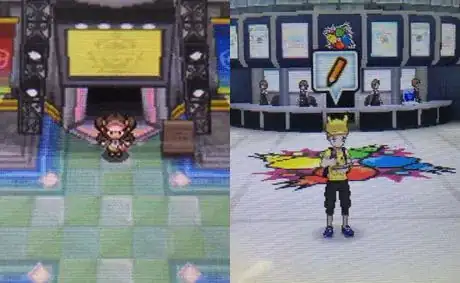
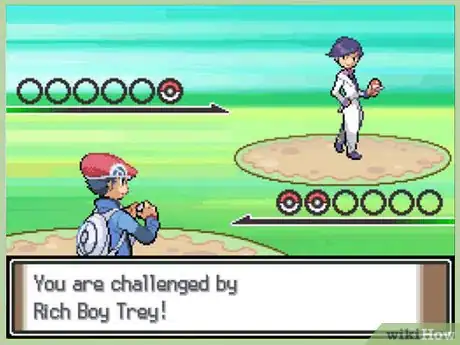
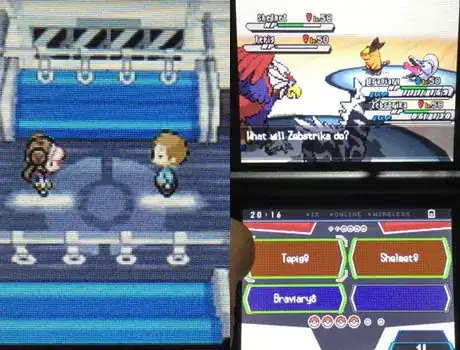
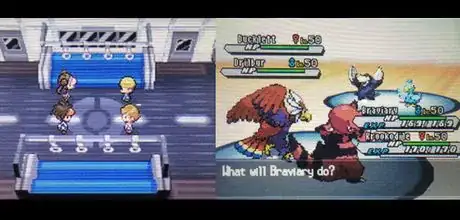
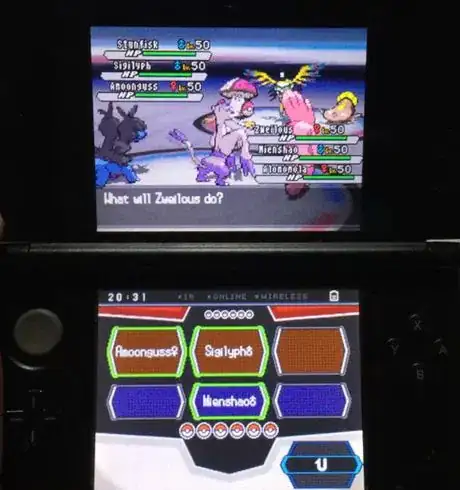
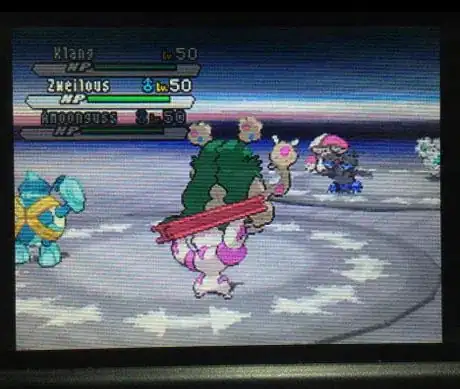
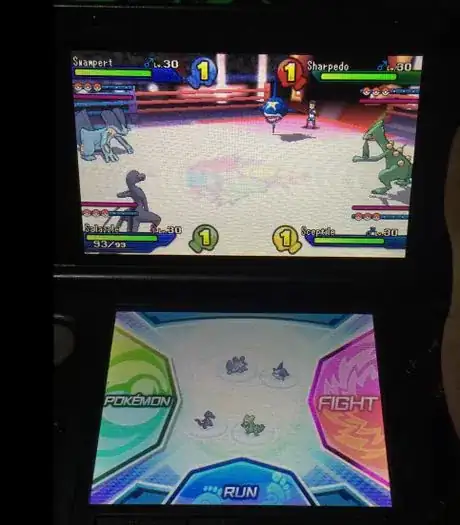
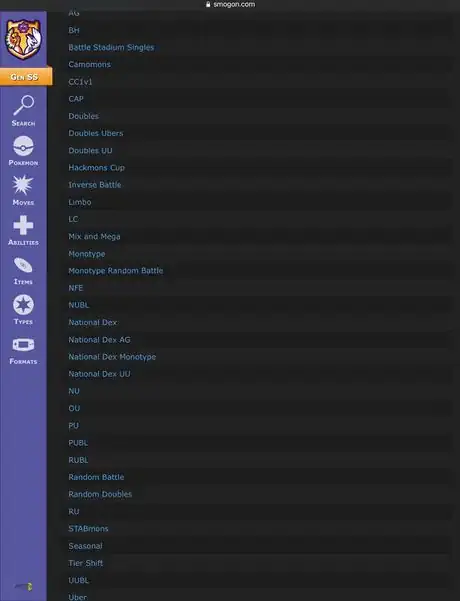
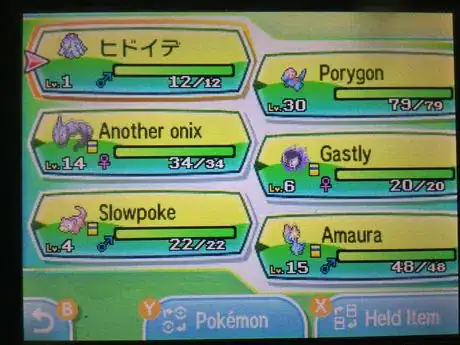
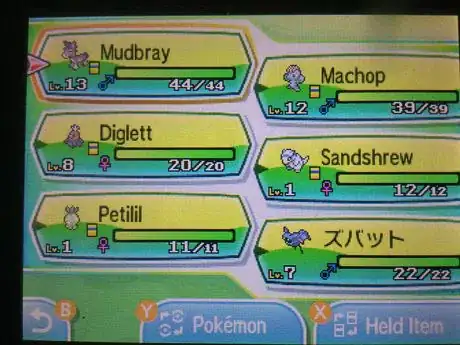
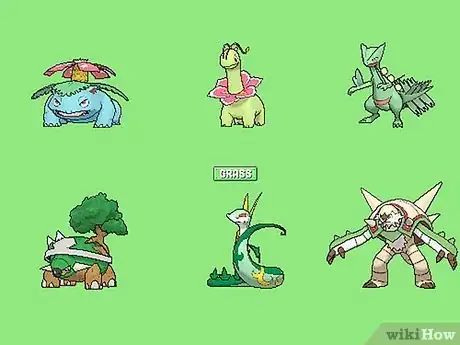

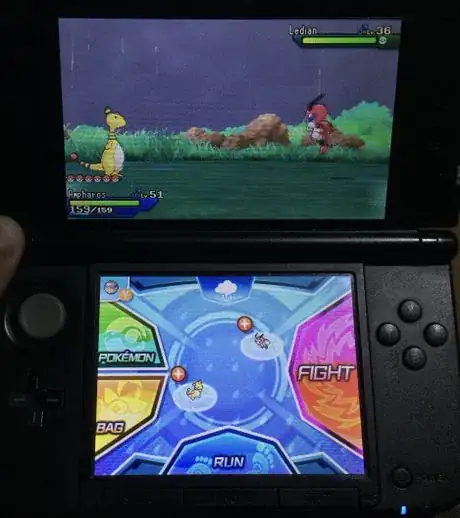
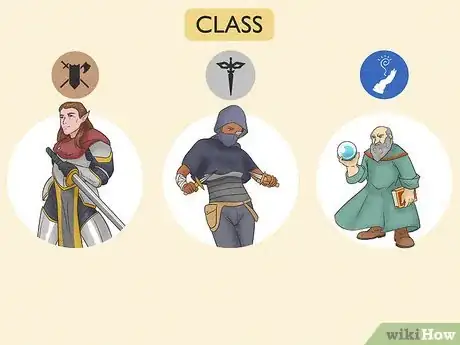

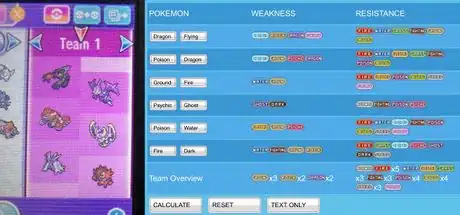
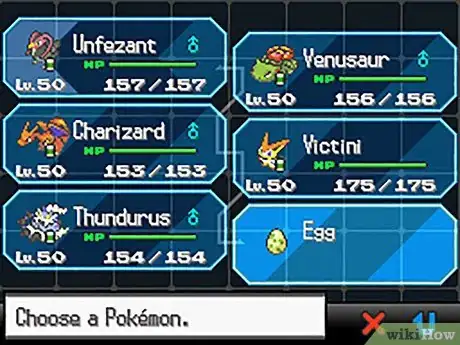
.webp)
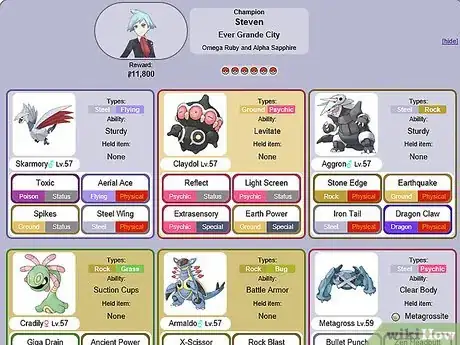
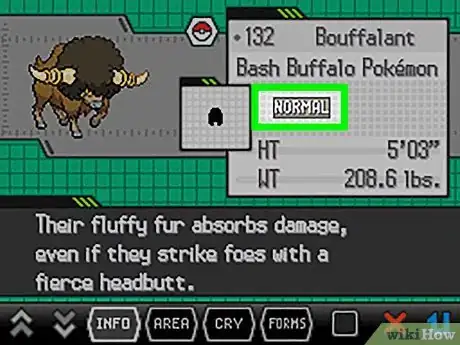
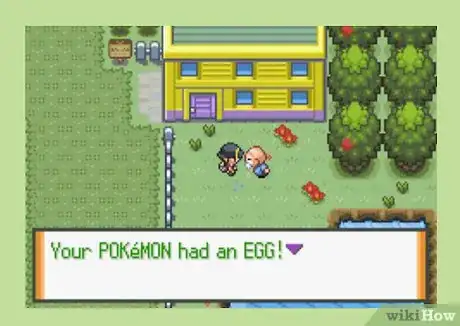
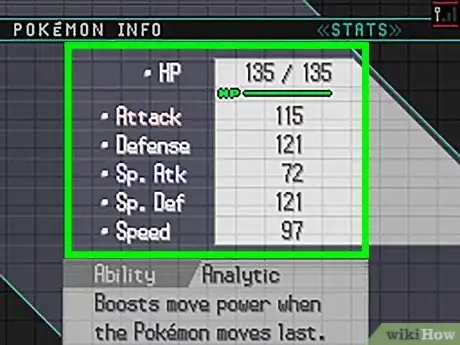
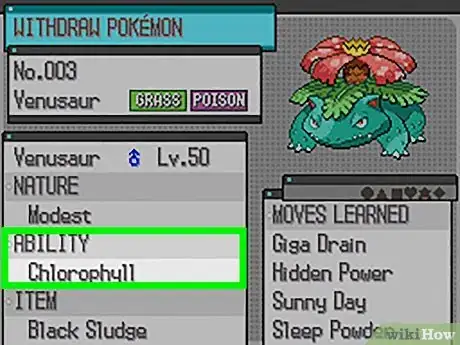
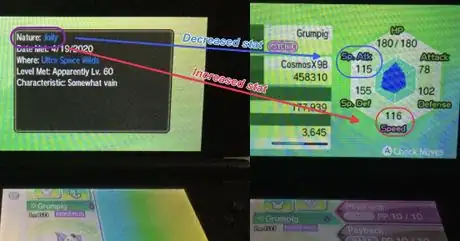
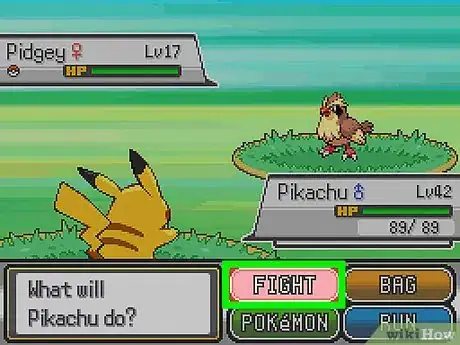
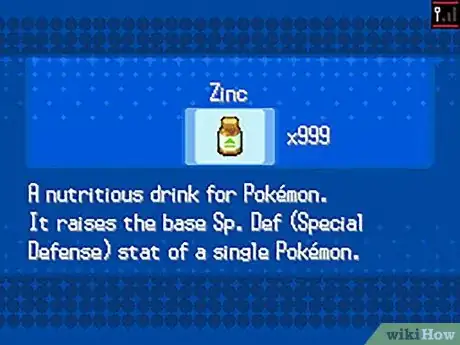
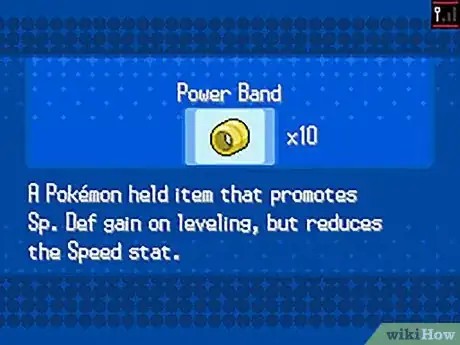
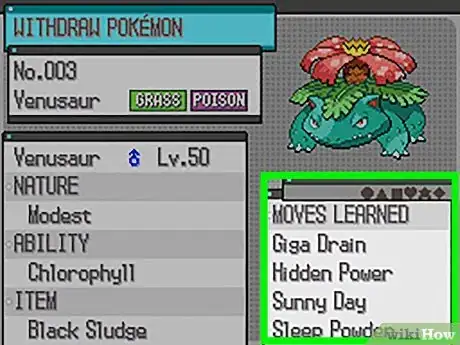
.webp)
